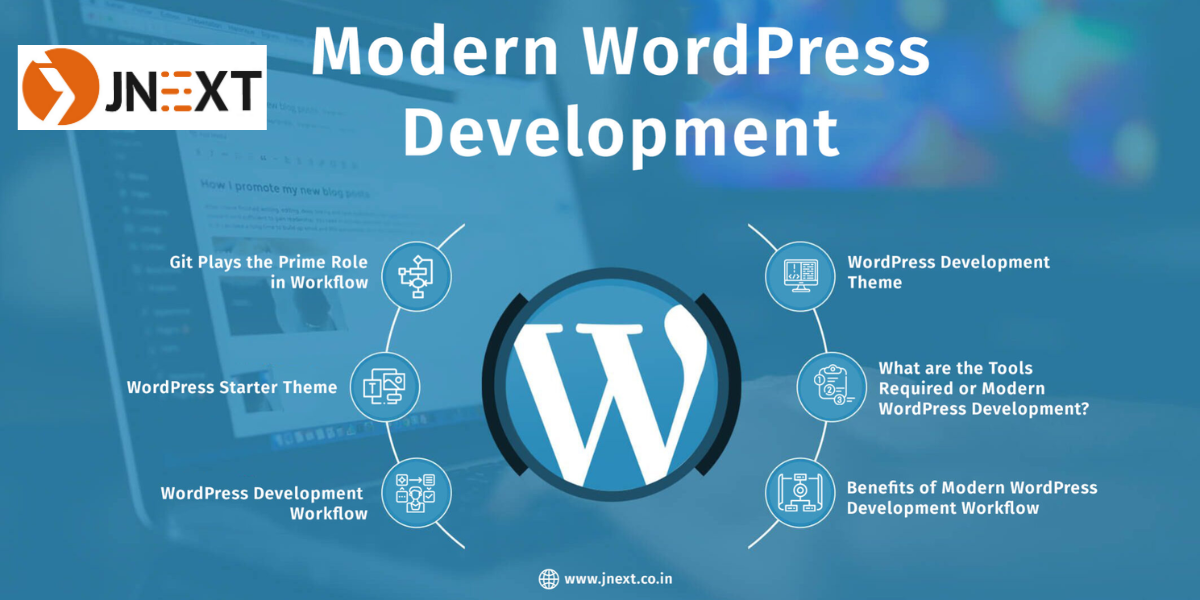Approach Modern WordPress Development

Modern WordPress development involves a combination of traditional PHP and newer technologies to build robust, scalable, and maintainable websites.
Here's a step-by-step Approach to Modern WordPress Development:
-
Understand WordPress Basics:
- Before diving into modern development practices, make sure you have a solid understanding of basic WordPress concepts, including themes, plugins, templates, and the structure of a WordPress site.
-
Setup a Development Environment:
- Use a local development environment to build and test your WordPress projects. Tools like Local by Flywheel, XAMPP, or Docker can help you set up a local server.
-
Use Version Control:
- Employ version control, such as Git, to track changes in your code. This allows you to collaborate with others, track changes, and easily roll back to previous versions if needed.
-
Choose a Modern Code Editor:
- Use a modern code editor like Visual Studio Code, Atom, or Sublime Text. These editors offer features like syntax highlighting, auto-completion, and extensions for PHP and WordPress development.
-
Follow Coding Standards:
- Adhere to WordPress coding standards to ensure consistency and readability in your code. This includes proper indentation, naming conventions, and file organization.
-
Use a Theme Framework or Starter Theme:
- Consider using a theme framework or a starter theme as a foundation for your projects. Frameworks like Underscores, Sage (Roots), or even popular theme builders like Elementor provide a solid starting point.
-
Embrace Modern PHP Practices:
- Adopt modern PHP practices such as namespaces, autoloading, and dependency management using Composer. These practices enhance code organization and maintainability.
-
Implement a Build Process:
- Use a build process to optimize and minify your assets (CSS, JavaScript). Tools like Webpack or Gulp can help streamline this process, improving site performance.
-
JavaScript Development:
- Leverage modern JavaScript practices and libraries for front-end development. Utilize ES6/ESNext syntax, and consider using a JavaScript framework like React or Vue.js if your project demands a more interactive user interface.
-
REST API Integration:
- Leverage the WordPress REST API to build decoupled or headless applications. This allows you to use WordPress as a backend CMS while building the frontend with technologies like React or Vue.js.
-
Use Custom Post Types and Taxonomies:
- Take advantage of custom post types and taxonomies to organize and structure content. This allows you to extend WordPress beyond traditional blog structures.
-
Implement Responsive Design:
- Ensure that your themes are responsive and mobile-friendly. Use CSS frameworks like Bootstrap or Flexbox to streamline responsive design.
-
Security Best Practices:
- Implement security best practices, including input validation, data sanitization, and securing user data. Regularly update your plugins, themes, and WordPress core to patch security vulnerabilities.
-
Performance Optimization:
- Optimize your site for performance by using caching mechanisms, image optimization, and a Content Delivery Network (CDN).
-
Testing:
- Implement unit testing and functional testing for your codebase. Tools like PHPUnit and Codeception can be used for testing in WordPress.
-
Documentation:
- Document your code and project architecture to make it easier for others (or yourself) to understand and maintain the code in the future.
-
Stay Updated:
- Keep up with the latest developments in WordPress and web development. Attend WordPress events, read blogs, and participate in the community to stay informed about best practices and emerging technologies.
By following these steps, you can approach WordPress development with a modern and efficient mindset, ensuring that your projects are scalable, maintainable, and in line with current industry standards.
Thank you.
